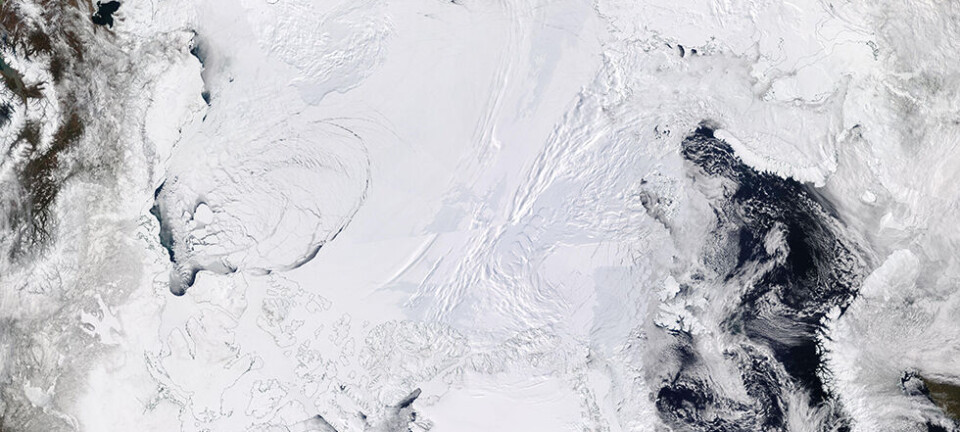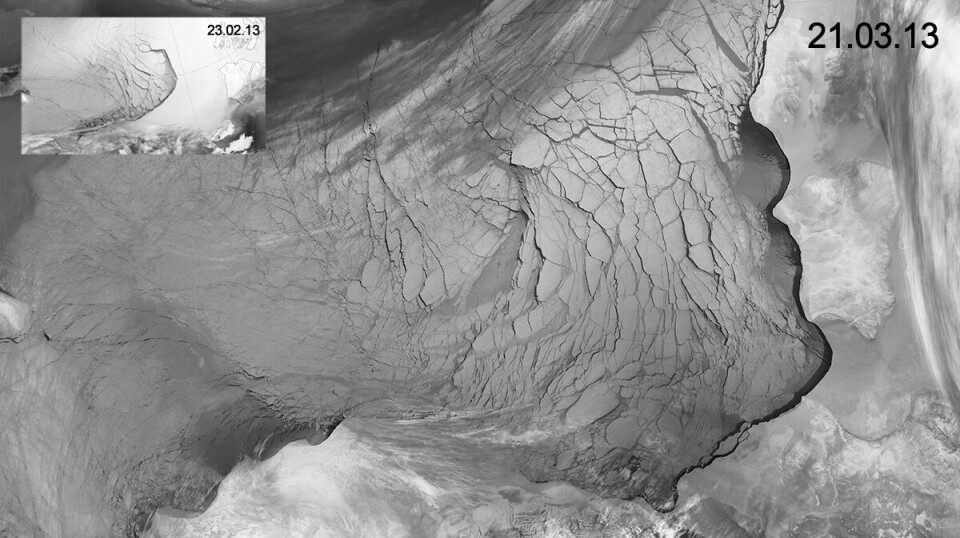THIS CONTENT IS BROUGHT TO YOU BY the University of Bergen - read more

This ice does not get the chance to grow old
Young sea ice breaks apart more easily than old ice. Breakup of large areas of sea ice has become increasingly more common.
In March and February 2013, an area of sea ice north of Alaska broke up over a period of two to three weeks. Strong winds drove large ice floes from the Beaufort Sea toward the Bering Strait.
Since the ice had formed during that same winter, it was more fragile and broke apart more easily than older ice would have.
“We are moving from thicker, multi-year ice to thinner, newly formed ice,” says Jonathan Rheinlænder.
He is a researcher at the Nansen Environmental and Remote Sensing Centre and the Bjerknes Centre.
“There are more leads,” he says.
Leads are open areas in the sea ice.

Rheinlænder investigates rapid breakup events. The ice pack disintegrates from a continuous surface into a cluster of floes that are easily moved by currents and winds.
Young ice is weaker
The Arctic sea ice cover reaches its minimum in September, after summer melting.
According to the US National Snow and Ice Data Center, 2024 is not among the years with the least ice, though there is considerably less than in any year before 2007.
Data from September 2012 shows the smallest sea ice extent recorded. The rapid breakup event in the Beaufort Sea in late winter 2013 followed that summer.
Simulations Jonathan Rheinlænder and his colleagues, using an ice model, indicate that the ice cover in the Beaufort Sea breaks apart more easily now than in the past. More often than before, large areas break apart during storms.
“One might think that the increase in leads was caused by stronger winds. That's not the case. We can only explain this with changes within the ice,” he says.
Storms have not become more frequent. The fact that the ice cover breaks up more frequently is because the ice is thinner and more fragile.
“If the melting season starts with a thin ice cover, it may break down earlier. At the same time, a lot of other things come into play,” he says.

Temperatures and wind conditions during the summer largely determine how much sea ice melts that year.
No time for ageing
Open water increases the transport of heat from the ocean and into the cold, Arctic winter night. Leads can cause the sea to cool down more than if it had been protected by ice.
“Previously, it was thought that leads increase the production of new ice. But we must consider both sides of the equation,” says Rheinlænder.
When the ice breaks up, it is easily moved. In years with a lot of fracturing, more ice is transported out of the Beaufort Sea. Overall, simulations and satellite data show that breakups cause reductions in winter sea ice.
In the past, ice from the western coast of Greenland remained in the Beaufort Sea for several years before being transported out. Now, sea ice in this region rarely gets old.
“After 2007, the Beaufort Sea has gone from a nursery to a graveyard,” he says.
Reference:
Rheinlænder et al. Breaking the Ice: Exploring the Changing Dynamics of Winter Breakup Events in the Beaufort Sea, JGR Oceans, vol. 129, 2024. DOI: 10.1029/2023JC020395

This content is paid for and presented by the University of Bergen
This content is created by the University of Bergen's communication staff, who use this platform to communicate science and share results from research with the public. The University of Bergen is one of more than 80 owners of ScienceNorway.no. Read more here.
More content from the University of Bergen:
-
Researcher: Politicians fuel conflicts, but fail to quell them
-
The West influenced the Marshall Islands: "They ended up creating more inequality"
-
Banned gases reveal the age of water
-
Researchers discovered extreme hot springs under the Arctic
-
Tiny particles unlock vinegar’s hidden healing potential
-
“Why doesn't it rain more?” asks researcher





































